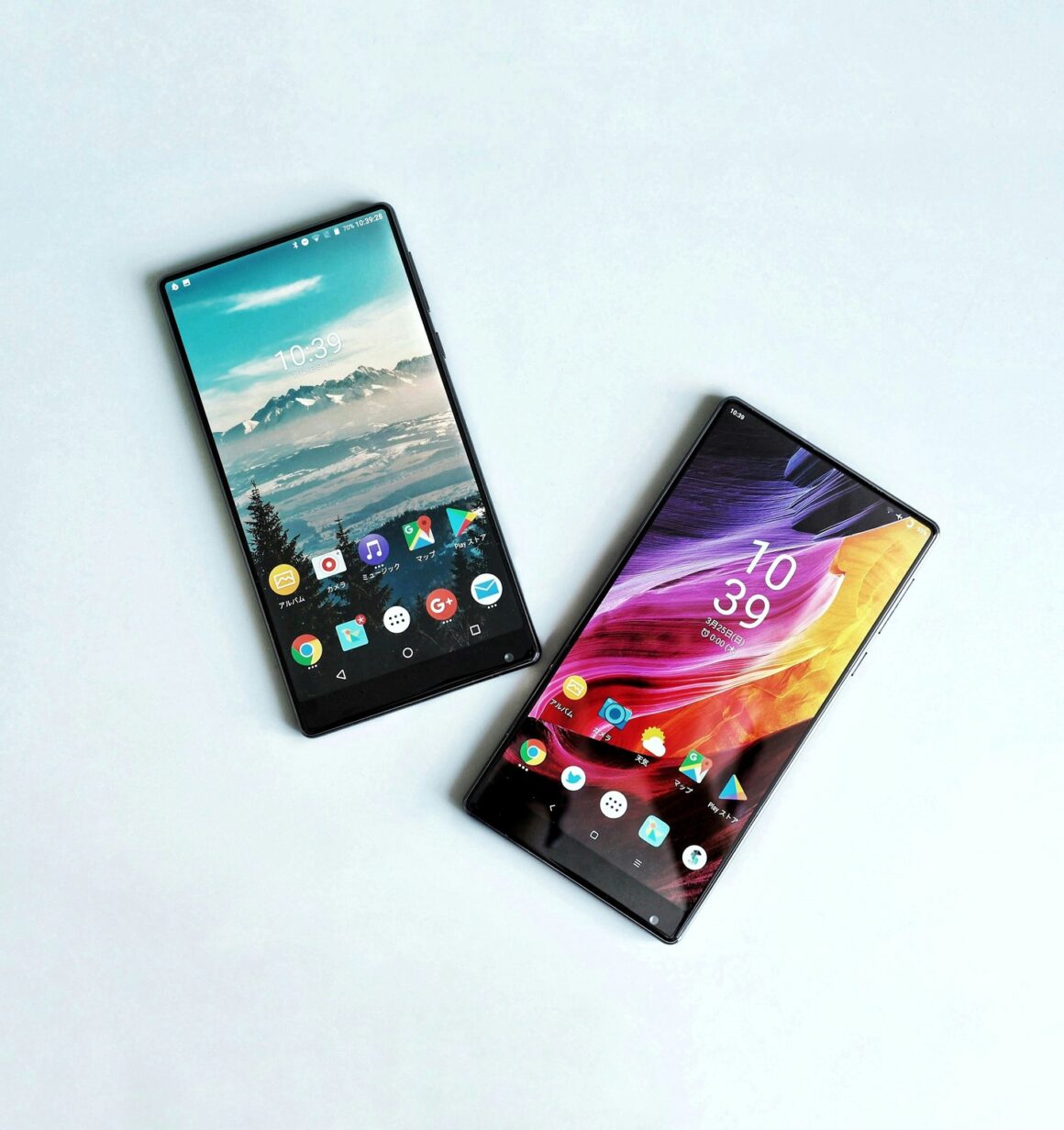Introduction
In today’s fast-paced world, a smartphone is not just a luxury; it’s a fundamental tool that connects us to the world in ways we could hardly imagine a decade ago. The right smartphone can enhance your productivity, connect you with loved ones, entertain you, and even help manage your life through apps and services. As technology swiftly advances, each year brings new innovations and features that make these devices more integral to our daily lives.
However, the vast array of models, features, and prices can make choosing the right smartphone a daunting task. From cutting-edge camera technologies to blazing-fast processors, each smartphone offers something unique, making it essential to find one that aligns perfectly with your needs and budget.
The goal of this post is to navigate you through the ever-evolving landscape of smartphones. Whether you’re a tech-savvy user looking for the latest innovations or someone seeking a basic model for everyday tasks, this guide aims to help you make an informed decision that maximizes value for your money. Let’s dive into understanding what really matters when selecting a smartphone that’s best for you.
1: Understanding Your Smartphone Needs
Choosing the right smartphone begins with a clear understanding of what you need from the device. This section explores how to evaluate your usage and set a realistic budget, ensuring that you find a smartphone that not only meets your requirements but also fits your financial plan.
1.1: Evaluate Your Usage
Smartphones today cater to a wide range of users, each with distinct needs and preferences. To find the perfect model for you, consider what user profile best describes your primary use of the device:
- Photographers: If you are passionate about photography or your profession involves capturing high-quality images, look for smartphones that boast advanced camera specifications such as multiple lenses, high megapixel counts, and manual settings. Example devices include the latest from the iPhone Pro series or the Samsung Galaxy Ultra series, known for their cutting-edge camera technology.
- Gamers: Gaming on mobile requires a smartphone with a robust processor, a durable battery, and a display with high refresh rates to ensure smooth gameplay without lags. Devices like the ASUS ROG Phone or the OnePlus series offer tailor-made features for a seamless gaming experience.
- Business Professionals: For those who use their phones primarily for work, features like security, productivity apps, and multitasking capabilities are vital. Smartphones such as the Google Pixel series and Samsung Galaxy Note series provide excellent tools for managing work on the go with powerful processors and software optimized for business tasks.
Each of these profiles demands different features from a smartphone, and recognizing your primary needs can significantly narrow down your choices. Opting for a device that aligns well with your main activities will enhance your daily interactions with your smartphone.
1.2: Setting Your Budget
Your budget is a crucial determinant of the smartphone you can afford. Prices for new smartphones range widely, from budget-friendly models under $200 to high-end devices that exceed $1,000. Establishing how much you are willing to spend will not only filter your options but also help you prioritize the features that are most important to you.
- High-End Smartphones: These devices are the flagships of major brands, offering the latest technology, superior cameras, and the smoothest performances. If budget is less of a concern, investing in a high-end model ensures you get a device that remains competitive for longer.
- Mid-Range Smartphones: Often providing the best balance between cost and functionality, mid-range phones are perfect for users who need reliable performance and good cameras without the premium price tag.
- Budget Smartphones: For those who need a device for basic tasks like calling, texting, and light app usage, budget smartphones are an economical choice. Many models available in 2024 offer excellent value, featuring solid performance and good battery life that can comfortably handle everyday activities.
2: Key Features to Consider
When selecting a smartphone, the key features can make a significant difference in usability and satisfaction. This section breaks down crucial aspects to consider, such as the operating system, hardware specifications, camera quality, and battery life, ensuring you make an informed choice that suits your daily needs.
2.1: Operating System (OS)
One of the first decisions in choosing a new smartphone is selecting the operating system. The two main competitors are Android, developed by Google, and iOS, developed by Apple. Here’s how to decide between Android and iPhone:
- Customization and Variety: Android phones are known for their high level of customization options. From widgets to alternative app stores, Android offers a more flexible user experience. Additionally, Android powers a wide range of devices across various price points.
- Ecosystem and Integration: Apple’s iOS offers seamless integration with other Apple products, such as the iPad, MacBook, and Apple Watch. If you own other Apple devices, an iPhone might be the natural choice for its ecosystem benefits, including continuity features that allow you to start a task on one device and finish it on another.
- Updates and Security: iPhones are renowned for their regular and timely software updates, which are available to all iOS devices simultaneously. In contrast, Android updates can be staggered by device and manufacturer, potentially impacting security and feature availability.
- User Experience: iOS is often praised for its simplicity and ease of use, while Android offers a more customizable interface that tech-savvy users may prefer.
Choosing the right OS will depend on your personal preference for either a uniform, streamlined user experience (iOS) or a customizable, versatile platform (Android).
2.2: Hardware Specifications
The internal components, such as the CPU, RAM, and storage options, are the heart of smartphone performance. Understanding these specifications is essential:
- CPU (Central Processing Unit): The processor is the brain of your smartphone, affecting everything from app launching speed to multitasking ability. Higher-end processors typically offer better performance and efficiency.
- RAM (Random Access Memory): RAM helps in multitasking. More RAM allows more applications to run smoothly in the background without slowing down.
- Storage: Consider how much internal storage you’ll need for apps, photos, videos, and other data. While some Android devices offer expandable storage via microSD cards, iPhones do not, making it important to choose a model with adequate built-in storage.
Investing in good hardware can enhance your overall experience, especially for demanding uses like gaming or high-resolution video recording.
2.3: Camera Quality
Camera technology is a major selling point for smartphones. Key aspects to look for include:
- Megapixels: While a higher megapixel count can mean more detail, it’s not the sole factor in image quality. Lens quality and image processing software are also crucial.
- Lens and Aperture: A larger aperture (lower f-number) lets more light into the sensor, improving low-light performance. Multiple lenses, such as wide-angle or telephoto, expand shooting capabilities.
- Software Features: Features like night mode, portrait mode, and artificial intelligence enhancements can significantly improve photo outcomes.
A superior camera can transform your smartphone into a powerful photographic tool, ideal for both casual snapshots and serious photography.
2.4: Battery Life
Good battery life is essential for ensuring that your smartphone can last through your busiest days without needing a recharge. Here’s what to look for:
- Battery Capacity: Measured in milliampere-hours (mAh), a higher number generally means that the battery can last longer on a single charge, though actual performance will also depend on the phone’s overall efficiency and usage patterns.
- Charging Technology: Fast charging, wireless charging, and reverse charging are features that can improve the charging experience significantly.
- Usage Optimization: Some smartphones offer battery saving modes that can extend battery life when you’re low on power.
Knowing how to assess battery life in terms of these factors can guide you in buying a smartphone that won’t let you down when you need it most.
3: Comparing Top Models in 2024
With numerous smartphone models released each year, choosing the best one can seem overwhelming. This section provides a detailed comparison of top smartphones in 2024, helping you understand their strengths and how they might meet different user needs.
3.1: Latest Smartphone Reviews
In 2024, the smartphone market continues to offer a variety of options, each with unique features. Here are some of the top contenders:
- Apple iPhone 14 Pro Max: Known for its superior build quality, excellent camera system, and seamless integration with other Apple products, the iPhone 14 Pro Max continues to be a favorite for iOS lovers.
- Samsung Galaxy S25 Ultra: This model is a powerhouse for Android users, featuring an expansive display, enhanced battery life, and a top-tier camera that excels in photography.
- Google Pixel 8 Pro: Google’s flagship provides an impressive pure Android experience with advanced AI features, a highly competent camera, and regular updates directly from Google.
- OnePlus 11 Pro: Known for its speed, the OnePlus offers fast charging, a responsive user interface, and competitive pricing for a high-end phone.
These models represent the cutting edge in smartphone technology, each catering to different preferences and priorities. Whether you prioritize camera quality, battery life, or processing power, 2024’s smartphones have something for everyone.
3.2: Niche Picks
Aside from mainstream choices, there are smartphones designed to fulfill specific needs:
- Caterpillar Cat S62 Pro: Built to last, this rugged phone is ideal for users in construction or those who need a device that can withstand harsh environments.
- Sony Xperia 1 IV: A dream for video creators and photographers, this phone features a true optical zoom lens and a pro-grade video camera.
- Unihertz Jelly 2: For those who desire compactness, this tiny smartphone fits in the palm of your hand, offering Android functionality without the bulk.
Each of these niche picks is engineered to meet unique consumer needs, ensuring there’s a perfect smartphone for every type of user.
4: Where to Buy Smartphones
Once you’ve decided on the model, the next step is purchasing your new smartphone. Here’s how to navigate the buying options:
4.1: Buying Options
- Online Purchasing: Buying a smartphone online offers convenience and the ability to quickly compare prices and models. Many online retailers also offer exclusive deals or bundles that are not available in stores. However, the downside is that you cannot physically handle the device before buying, which may lead to surprises in terms of feel and usability.
- In-Store Purchasing: Visiting a retail store allows you to get a hands-on feel for different models, ask questions directly to sales representatives, and potentially walk out with a new phone immediately. The main con is that in-store prices can sometimes be higher than online, and the selection may be limited.
4.2: Tips for Finding the Best Deals and Offers:
- Seasonal Sales: Take advantage of sales during major holidays or events like Black Friday, Cyber Monday, and back-to-school seasons for the best deals.
- Compare Prices: Use price comparison websites to ensure you are getting the best deal available.
- Check Carrier Offers: Sometimes carriers offer significant discounts on phones when you sign up for a new contract or trade in an old device.
- Look for Refurbished Models: If you’re open to refurbished phones, they can provide significant savings over new models and are often in like-new condition.
By considering these factors, you can make a purchase that not only meets your needs but also fits your budget, ensuring you get the best possible value from your new smartphone.
5: Final Considerations and Tips
Before finalizing your smartphone purchase, there are a couple of critical aspects to consider that can significantly impact your long-term satisfaction with the device. This section discusses the importance of warranty and support, as well as how to ensure your new smartphone remains functional and relevant for as long as possible.
5.1: Warranty and Support
The warranty and customer support offered with a smartphone can be as crucial as the device’s features. A good warranty can save you from unexpected costs if your phone malfunctions or breaks:
- Warranty Length: Typically, smartphones come with a one-year warranty, but some manufacturers may offer extended warranties either included or for an additional cost. Consider these options as a potential investment in your peace of mind.
- Customer Support: Effective support can alleviate many headaches associated with device issues. Evaluate the reputation of the brand’s customer service—how easy is it to get in touch, the availability of service centers near you, and user reviews of their service experiences.
- Insurance and Protection Plans: Some retailers and carriers offer insurance plans that cover damage not typically covered by standard warranties, such as accidental drops or water damage. Weigh the cost of these plans against the potential risk depending on how you use your device.
Choosing a brand known for its robust customer support can significantly enhance your experience, especially when you encounter issues with your device.
5.2: Future-proofing Your Purchase
Future-proofing your smartphone is about ensuring it continues to meet your needs throughout its lifespan, not just when it’s new. Consider these factors:
- Software Updates: Regular software updates can improve the functionality of your phone and protect against security vulnerabilities. When choosing a smartphone, consider manufacturers that provide consistent and extended software updates.
- Hardware Capabilities: Selecting a smartphone with advanced hardware can delay the need for an upgrade. Look for features that might become standard in the future, such as 5G compatibility, high-refresh-rate displays, or enhanced biometric security features.
- Ecosystem Flexibility: Choosing a device that works well with other connected devices you own or plan to buy can add value, making it a better long-term investment.
Investing in a smartphone that stays relevant with technology advancements can provide a better return on investment and a more satisfying user experience over its usable life.
Conclusion
This guide has covered the essential considerations when buying the right smartphone for your needs, from understanding different user profiles and setting a budget to evaluating key features and making the purchase. Remember, the best smartphone for you is one that fits both your needs and your budget.
Call to Action
Have insights or experiences with choosing the right smartphone? Share your thoughts and preferences in the comments below—we’d love to hear from you! For more updates and guides like this, be sure to follow our blog and stay informed on the latest in technology and mobile devices.







